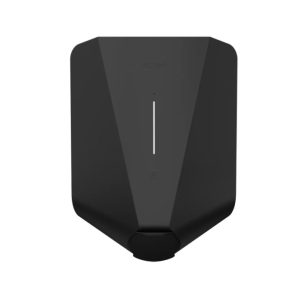The e-zoomed FAQ series: brief responses to pertinent questions related to driving an electric car! If you have a question, simply email us at shop@ezoomed.com!
Electric Cars: The Basics
For those of you new to zero-emission electric driving, we recommend a read of the following articles:
Sign up to the e-zoomed Electric Living newsletter
NEDC Data, WLTP Data And Real World Data: Which One?
We have all been there! We have purchased a vehicle based on the efficiency data provided by the manufacturer (OEM), to only find out that the real-world data is markedly different from the manufacturer’s quoted data! The reality is that the quoted fuel economy or electric range data for all engine types, whether petrol, diesel or electric, are at best, just a guide with a varied degree of inaccuracy!
On 1st September 2017, the new WLTP testing cycle was introduced, to replace the New European Driving Cycle (NEDC) measuring cycle, which was introduced in the 1980s. The primary reason for the replacement of the NEDC testing procedure, was the significant difference between the NEDC data and real-world data. Bottom-line, the NEDC data had become increasingly inaccurate and outdated. The NEDC test cycle is conducted under unrealistic laboratory conditions, to include: uniform accelerations, uniform speeds, very low average speeds and long resting periods, resulting in inaccurate efficiency data.
The primary objective of the Worldwide Harmonised Light Vehicle Test (WLTP) testing procedure, is to improve data accuracy and transparency. For the introduction of the WLTP measuring cycle, data was collected from 14 countries and based on 750,000 kilometres. The European Commission recommended converting communications from NEDC to WLTP from 1st January 2019.
Despite the improvement in data accuracy from NEDC to WLTP, in general, there still remains a significant difference between real-world efficiency data and those released under the WLTP cycle. In relation to battery-electric vehicles (BEVs) and plug-in hybrid electric vehicles (PHEVs), real world electric range can be as much as 30% lower, compared to the WLTP quoted data.
Do keep in mind that a WLTP testing procedure is still conducted under a laboratory setting i.e. it is simulated and not real-world driving conditions. The good news is that unlike the NEDC, the WLTP uses more ‘real-world’ conditions for the test cycle, to include: higher average driving speeds, longer cycle times, longer cycle distances, faster acceleration sequences, maximum speeds and shorter/ less frequent resting periods.
Moreover, for the very first time, optional equipment is also incorporated for the testing procedure (optional equipment impacts the vehicle weight). Despite the improvements in the WLTP testing cycle, it still remains a ‘baseline test’. The testing cycle does not include the use of air conditioning, headlights, auxiliary equipment and the driving profile does not represent all driving conditions.

For pure electric cars, like the best-selling Volkswagen ID.3, the use of air conditioning, auxiliary services, no of passengers (vehicle payload), weather, ambient temperature, road conditions, tyres, EV battery SoC and different driving profiles, can impact the real-world electric range by 30%. Also do keep in mind that the WLTP testing also include, CO2 emissions, which is relevant for a PHEV.
Though the WLTP is an improvement compared to the NEDC, it still falls short of accurate real-world data. At best, the WLTP testing procedure offers more accurate guidance compared to NEDC, but still has room for improvement.
WLTP: Basics 101
- Introduced to improve data for consumers on emissions and fuel consumption (internal combustion engines i.e. petrol and diesel) and range (electric cars).
- The previous standard, the New European Driving Cycle (NEDC) is based on laboratory tests i.e. not a good reflection of realistic driving conditions.
- WLTP uses real-driving data, such that results reflect more accurately everyday driving conditions. The standard has been developed by the United Nations Party on Vehicle Regulations. Though, it is envisioned to be a global standard, Europe is the first region to formally adopt the testing standard.
WLTP Testing Conditions Include
| WLTP |
|---|
| More realistic driving behaviour. |
| Assessment of driving situations to include urban, suburban, main road and motorway. |
| Longer distances. |
| More realistic acceleration and braking driving profile. |
| Higher average and maximum speeds. |
| More realistic ambient temperatures. |
Some Differences Between NEDC and WLTP
| WLTP Vs NEDC |
|---|
| Test cycle: NEDC: single test cycle/ WLTP: dynamic test cycle. |
| Cycle distance: NEDC: 11 km/ WLTP: 23.25 km. |
| Average speed: NEDC: 34 km per hour/ WLTP: 46.5 km per hour. |
| Maximum speed: NEDC: 120 km per hour/ WLTP: 131 km per hour. |
The All-Electric Renault Zoe
As an example, let’s look at the difference between NEDC, WLTP and real range estimates for the Renault Zoe (R110).

| Battery Capacity: | 41.00 kWh |
| NEDC Range: | 186 miles |
| WLTP Range: | 179 miles (at 50 miles per hour) |
| What Car? Real Range: | 146 miles |
The NEDC range is nearly 30% more than the What Car? Estimate. The WLTP range, though more conservative, is still more than 20% compared to the What Car? estimate.
The All-Electric Nissan Leaf

In the case of the ubiquitous Nissan Leaf, the difference between NEDC/ WLTP compared to What Car? is over 30%.
| Battery Capacity: | 40.00 kWh |
| NEDC Range: | 168 miles |
| WLTP Range: | 168 miles |
| What Car? Real Range: | 128 miles |
The All-Electric Hyundai Kona Electric

As for the Hyundai Kona Electric SUV, the NEDC range is around 14% higher than the What Car? estimate.
| Battery Capacity: | 39.00 kWh |
| NEDC Range: | 180 miles |
| WLTP Range: | N/A miles |
| What Car? Real Range: | 158 miles |
While e-zoomed uses reasonable efforts to provide accurate and up-to-date information, some of the information provided is gathered from third parties and has not been independently verified by e-zoomed. While the information from the third party sources is believed to be reliable, no warranty, express or implied, is made by e-zoomed regarding the accuracy, adequacy, completeness, legality, reliability or usefulness of any information. This disclaimer applies to both isolated and aggregate uses of this information.




































